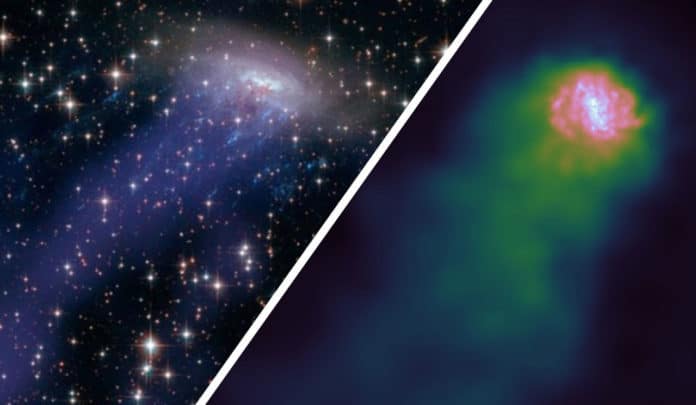A new Yale-led study shows that some black holes feast under pressure.
When distant galaxies- — and the supermassive dark gaps inside their cores— aggregate into bunches, these clusters create an unpredictable, exceptionally pressurized environment. Individual galaxies falling into clusters are regularly twisted during the process and begin to appear as cosmic jellyfish.
Inquisitively, the unprecedented pressure suppresses the generation of new stars in these galaxies and, in the long run, stops normal black hole feeding from nearby interstellar gas. But not before allowing the black holes one final feast of gas clouds and the occasional star.
The scientists likewise proposed this quick feeding may be liable for the inevitable absence of new stars in those environments. According to this examination, group outflows of gas, driven by the black holes, may stop star formation.
Astrophysicist Priyamvada Natarajan, whose team initiated the research, said, “We know that the feeding habits of central supermassive black holes and the formation of stars in the host galaxy are intricately related. Understanding precisely how they operate in different larger-scale environments has been a challenge. Our study has revealed this complex interplay.”
The study adds an essential piece of information to a previous study regarding how supermassive black holes form, grow, and interact with their host galaxies in various cosmic environments.
To conduct this study, scientists performed sophisticated simulations of black holes within galaxy clusters using Romulus, a cosmological simulation.
Angelo Ricarte, a former member of Natarajan’s lab now at Harvard, said, “While analyzing black hole activity in the cluster simulation, I noticed “something weird happening once their host galaxies stopped forming stars. Surprisingly, I often spotted a peak in black hole activity at the same time that the galaxy died. That “peak” would be the black hole’s big, final feast, under pressure.”
Yale Center for Astronomy and Astrophysics Prize postdoctoral associate Michael Tremmel said, “RomulusC is unique because of its exquisite resolution and the detailed way in which it treats supermassive black holes and their environments, allowing us to track their growth.”
Support for the research came from several sources, including NASA and the National Science Foundation. The research is part of the Blue Waters computing project supported by the National Science Foundation and the University of Illinois at Urbana-Champaign.
Journal Reference:
- A Link between Ram Pressure Stripping and Active Galactic Nuclei. DOI: 10.3847/2041-8213/ab9022
